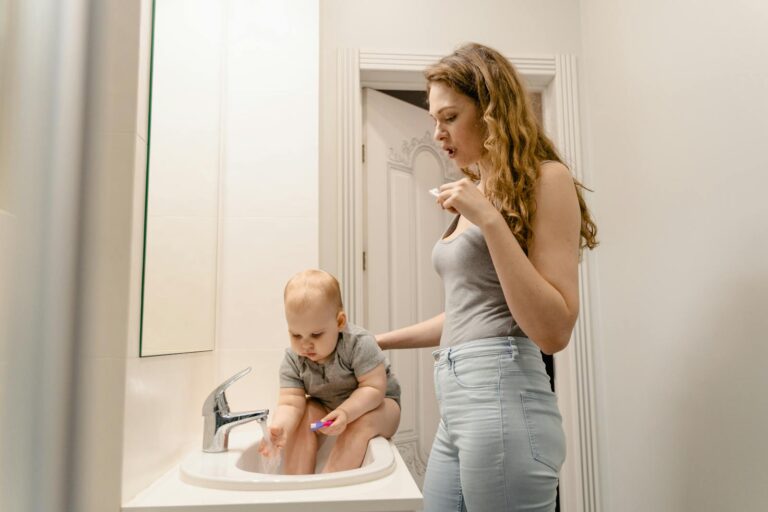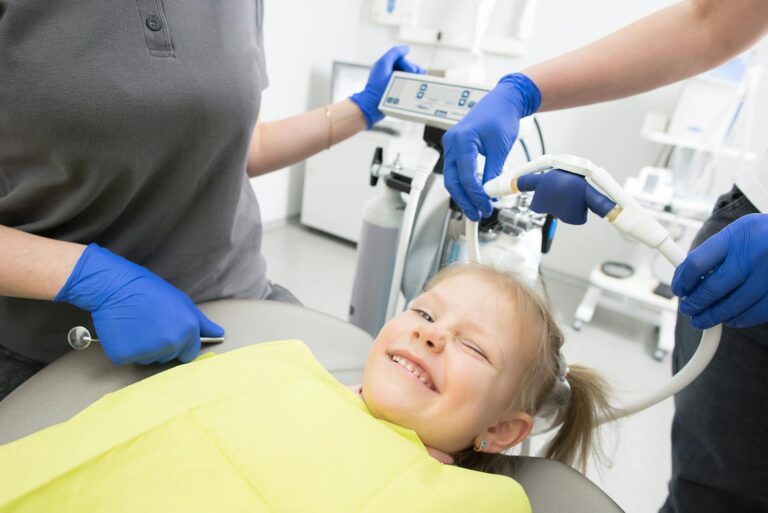What’s the Difference Between Family Dentistry and Pediatric Dentistry?
When it comes to finding the right dental care for your child, many parents wonder: Should I take my child to a pediatric dentist, or is a family dentist enough? Both provide valuable services, but they’re not quite the same. Understanding the difference between family dentistry and pediatric dentistry can help you make the best decision for your child’s needs—and your family’s peace of mind.
Let’s take a closer look at what sets these two types of dental care apart.
What Is Family Dentistry?
Family dentistry is a broad branch of dental care that focuses on treating patients of all ages, from toddlers to grandparents. A family dentist is a general dentist who provides a wide range of services including cleanings, fillings, crowns, preventive care, and some cosmetic treatments. They are trained to treat both children and adults, though their training may not include extensive specialization in child-specific techniques.
In a family dental office, you can often schedule appointments for the whole household under one roof, which is a major convenience for busy families. Many family dentists are gentle and experienced in working with children, but they may not always have the same depth of training in child psychology or behavior management as a pediatric specialist.
What Is Pediatric Dentistry?
Pediatric dentistry is a specialized field that focuses exclusively on the dental care of infants, children, and teenagers. Pediatric dentists complete dental school, just like general or family dentists, but they go on to receive an additional two to three years of advanced training specifically in children’s oral health.
This training covers everything from infant oral exams and managing teething discomfort to diagnosing developmental dental issues, treating childhood cavities, and even providing care for children with special healthcare needs. Pediatric dentists also receive instruction in child behavior, communication techniques, and sedation methods that help ensure children feel safe and supported during dental visits.
In short, pediatric dentistry is designed with kids in mind—every aspect of the office, from the equipment to the decor to the staff’s tone of voice, is tailored to make children feel at ease.
Key Differences Between Family Dentistry and Pediatric Dentistry – A Closer Look
While both family dentists and pediatric dentists are committed to promoting healthy smiles, there are several important distinctions between the two that go beyond age range. These differences relate to training, office environment, communication style, and the level of specialization in handling children’s unique oral health needs. Understanding these contrasts can help parents make a more informed decision when choosing dental care for their child.
1. Education, Training, and Specialization
Family dentists are general dental practitioners who complete four years of dental school and are licensed to treat patients of all ages. Their education includes broad training in diagnosing and treating common dental conditions such as cavities, gum disease, and restorative care. While they are capable of treating children, they do not receive extensive, in-depth training specifically focused on pediatric dental development and behavior.
Pediatric dentists, on the other hand, undergo an additional two to three years of specialized residency training after dental school. This advanced training is dedicated exclusively to the oral health of infants, children, and adolescents, including children with complex medical or behavioral conditions. It includes topics such as child psychology, sedation and anesthesia for children, growth and development of the jaws and teeth, trauma management in young patients, and treatment planning for children with special healthcare needs.
2. Office Environment and Child-Focused Design
Family dental clinics typically cater to a wide range of patients, so their offices tend to reflect a more neutral, general-purpose environment. The decor and equipment are often suited for both adults and children but may lack the playful, welcoming features that help put young children at ease.
Pediatric dental offices are purposefully designed with children in mind. From colorful wall murals and child-sized furniture to cartoon-themed exam rooms and interactive play areas in the waiting room, every aspect of the environment is tailored to help children feel relaxed, entertained, and safe. The atmosphere is intentionally friendly and non-threatening, which is especially helpful for young children who may be fearful or nervous about visiting the dentist.
3. Expertise in Behavior Management and Communication
One of the most critical differences between family and pediatric dentists is their approach to managing behavior and building rapport with children. Pediatric dentists receive specific training in child behavior management techniques, including methods like “tell-show-do,” positive reinforcement, and using soothing, age-appropriate language to explain procedures.
They are also trained to care for children with behavioral challenges, dental anxiety, sensory sensitivities, or special needs. Their ability to connect with children emotionally, communicate on their level, and create a sense of trust can significantly improve a child’s experience and long-term attitude toward dental care.
While many family dentists are comfortable working with children and may use a gentle approach, they may not have the same depth of experience or resources for handling more complex behavioral situations—especially in very young, anxious, or neurodivergent children.
4. Ability to Address Complex Pediatric Oral Health Needs
While family dentists provide excellent care for general dental needs, pediatric dentists are better equipped to handle unique and often complex issues related to childhood oral health. This includes treating early childhood caries (baby bottle tooth decay), managing dental trauma in toddlers and young athletes, guiding the proper development of teeth and bite alignment, and addressing oral habits such as thumb sucking or prolonged pacifier use.
Additionally, pediatric dentists are trained in working collaboratively with pediatricians, speech therapists, orthodontists, and other healthcare professionals when a child’s oral health is connected to broader developmental or medical concerns.
So Which Is Right for Your Child?
It depends on your child’s age, temperament, and specific dental needs. Many families begin with a pediatric dentist during early childhood, especially for children who are anxious, have special needs, or require specialized care for developmental issues. As children grow older and become more comfortable with dental visits, some parents choose to transition to a family dentist for convenience.
Ultimately, what matters most is finding a dental provider who makes your child feel comfortable, respected, and well cared for—whether they’re in a rocket ship-themed pediatric office or a modern, multi-generational family practice.
Final Thoughts
Both family dentistry and pediatric dentistry play an important role in maintaining your child’s oral health. Knowing the difference empowers you to make an informed choice based on your child’s unique personality and dental development.
And remember: it’s not just about finding a dentist—it’s about building a positive, lifelong relationship with oral health that begins in childhood and lasts well into adulthood.






